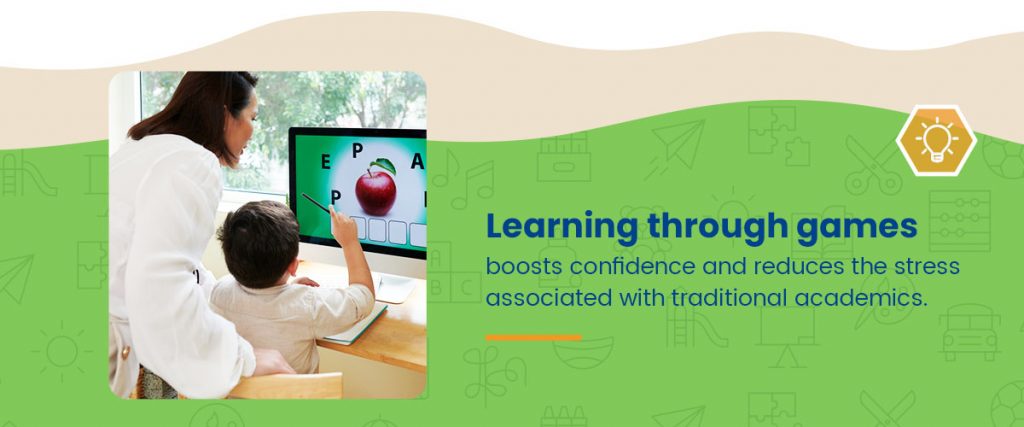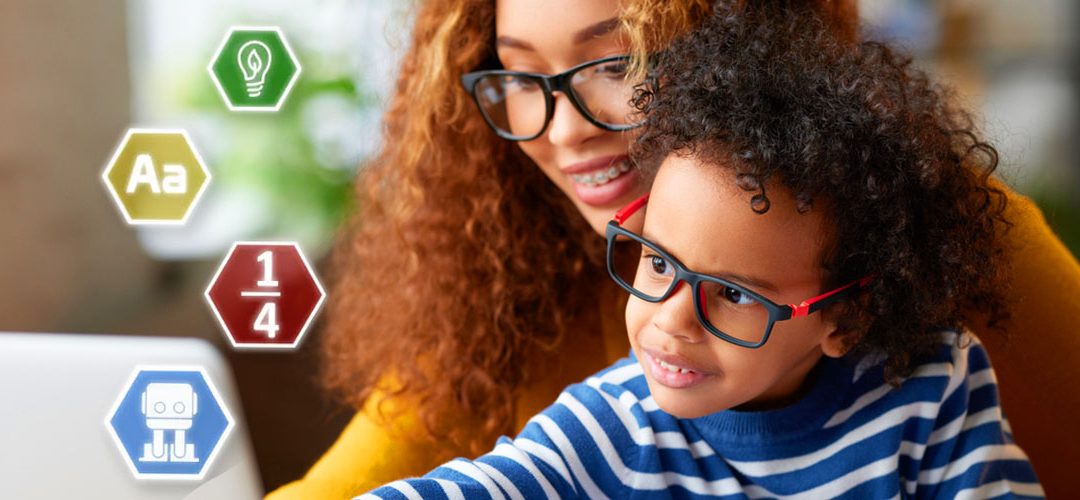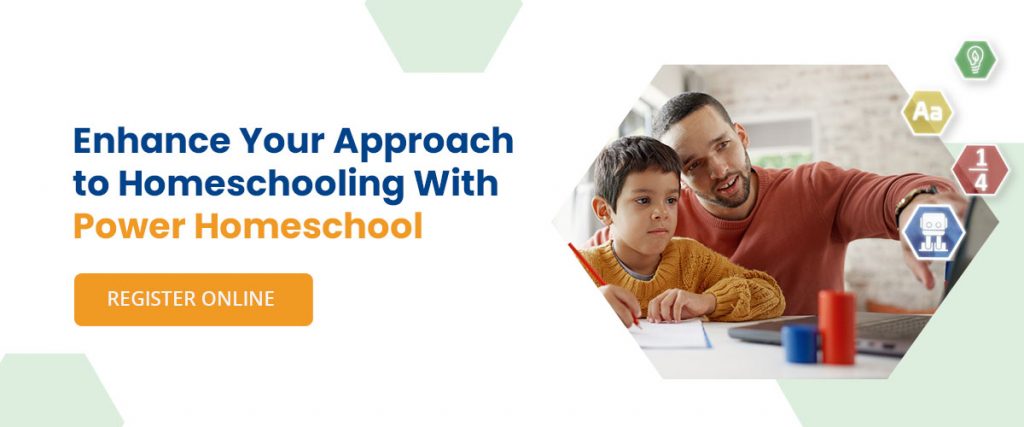There are many reasons parents choose to homeschool their children, including the flexibility to tailor their child’s learning to their needs, skills and passions. When you homeschool, you can incorporate many elements into your child’s education, including gameschooling.
Many parents incorporate gameschooling in homeschool environments to engage their children and teach them essential interpersonal skills. It’s a highly beneficial part of homeschooling for many children. However, it often works well alongside a robust curriculum of video courses, which provide the same level of engagement while helping children meet their core learning goals.
What Is Gameschooling?
Gameschooling is a teaching style that incorporates games into learning to help children grasp different skills. It’s an increasingly popular option for homeschooling parents, as it gives them the flexibility to combine education with interest-based learning. You can gameschool your child from pre-K to high school, focusing on academic and practical skills.
This type of learning is purposeful but fun. It can include anything from roleplaying a historical event to playing a board game. As a parent, it gives you the opportunity to make learning entertaining and bond with your child. You can adapt games to suit their learning style and curriculum while maintaining the same exciting and engaging atmosphere.
The Benefits of Gameschooling
Gameschooling is an effective and efficient way for children to learn. It’s enjoyable and engaging and offers many educational benefits, including:
- Developing social skills: Playing games requires social interactions, collaboration and following rules. During gameplay, your child can learn these skills in a natural, intuitive way. Younger children learn turn-taking and emotional regulation. They understand waiting, supporting their peers, losing with grace and winning with humility.
- Creating a positive association with learning: Gameschoolers learn that education is fun. Instead of putting it off, they can actively engage and seek it out themselves, which transforms the student experience. Gameschooling also allows students to spend more time with family.
- Focusing on hands-on education: Practical learning experiences are positive for children. Many remember things better when they interact with the material. Instead of worksheets, they can learn math concepts from Monopoly or spelling from Scabble, for example.
- Enhancing creativity and strategic thinking: Many games help strengthen our strategic skills, promoting logic, reasoning and critical thinking.
- Boosting confidence: Games are a low-pressure form of learning that makes mistakes part of the fun. Learning through games boosts confidence and reduces the stress associated with traditional academics.

Why Pair Gameschooling With a Video-Based Homeschool Curriculum?
Gameschooling can be an effective part of your homeschooling experience, but it works best when combined with more structured learning. Structured learning can be as engaging as gameschooling, especially when in the form of a video-based curriculum.
Video-based homeschool curricula can add the following dynamics to gameschooling:
- Maintaining student engagement: Video-based courses are engaging and interactive — 380% more compelling than plain text. Your child can benefit from professional instruction while still keeping learning exciting.
- Filling gaps in game-based learning: High-quality video-based content can help you address core subjects in homeschooling. It provides structure and measurable outcomes that help you assess your child’s strengths and improvement areas.
- Enjoying flexibility: Video-based courses integrate seamlessly with other forms of learning. Your child can enjoy self-paced learning that aligns with their energy levels, with some game-related sessions in between.
Tips for Integrating a Video-Based Curriculum With Gameschooling
It’s natural for homeschooling parents to encounter challenges when integrating different types of learning into their schedules. You want to do the best for your child, which means balancing all the elements that go into a successful day. Here are some tips for integrating a video-based curriculum into your gameschooling routine.
1. Design a Balanced Schedule
One of the best things about homeschooling is that it gives you the flexibility to plan a schedule that works for your family. However, you can still build balanced daily routines while maintaining that flexibility. The first step in designing a schedule is to set learning goals. These goals should be specific, measurable, attainable, realistic and time-bound (SMART). Involve your child in goal-setting to keep them engaged and invested in their learning.
Once you and your child have decided on goals, you can design a schedule. Aim for a routine that incorporates all the relevant forms of learning, from gameschooling to video lessons and field trips.
2. Incorporate Different Games
There are many types of games you can incorporate into your homeschooling routine, depending on the other tasks you want to complete that day. You can look for specific games that fulfill a learning objective, like Pictionary, to increase vocabulary or art skills. You can also integrate quick games that provide instant feedback to keep your child motivated. Some of the games you can incorporate include:
- Video games: Technology is a beneficial learning tool because it’s adaptive and personalized to your child. You can choose from roleplaying games, logic games and puzzles that help your child practice learning concepts embedded in engaging narratives. Outline time limits for video games, and focus on those that fit specifically into a lesson.
- Board games: These games are a good choice for sharpening social skills and cooperation. There are many options out there that focus on different academic skills, and they promote bonding time within your family. Many of these games take longer to complete, so you can play the same one for a few days to make time for other learning.
- Creative games: Gameschooling can also take the form of imagination. For example, if you’re learning about pirates, you can turn the couch into a pirate ship to engage your child in their lessons.
3. Create a Purposeful Gameschooling Environment
Some parts of homeschooling are pure fun, while others require quiet concentration. Create separate areas for gameschooling and video-based homeschooling so your child can fully engage in each area. The game area can be a little more relaxed, but encourage your child to keep their study area clean and free of distractions.
When homeschooling, your child may spend more time on the computer than a traditional student. In between games and school work, encourage them to take short breaks and engage in exercise so they can support their physical and mental health.
Enhance Your Approach to Homeschooling With Power Homeschool
When you homeschool your child, you need the support to explore different types of learning and find the best fit for your child. You can enjoy flexible, self-paced learning that brings out your child’s skills, passions and talents with Power Homeschool. Our homeschooling platform aims to empower parents through innovative technology so that you can support your child throughout their entire academic journey.
Power Homeschool gives you the flexibility to choose from hundreds of Acellus® courses that your child can complete at their own pace and on the schedule you choose. We give you the time to integrate gameschooling and any other learning modality, so you can keep your child engaged and excited about learning. Are you ready to get started? Learn more about Power Homeschool today!



